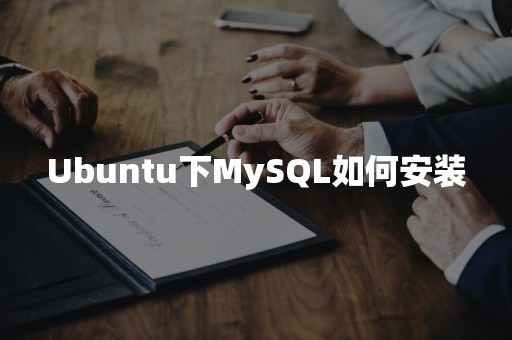Ubuntu下MySQL如何安装
这篇文章主要介绍了Ubuntu下MySQL如何安装的相关知识,内容详细易懂,操作简单快捷,具有一定借鉴价值,相信大家阅读完这篇Ubuntu下MySQL如何安装文章都会有所收获,下面我们一起来看看吧。

1. 安装sudo apt-get
update
sudo apt-
get install2.
数据库初始化sudo交互如下:Securing the MySQL server deployment.
Connecting to MySQL using a blank password.
VALIDATE PASSWORD PLUGIN can be used to test passwords
and improve security. It checks the strength of password
and allows the users to
set only those passwords which
are
secure enough. Would you
like to setup
VALIDATE PASSWORD plugin?
Press y|Y
for Yes,
any other
key for No: y
There
are three
levels of password validation policy:
LOW Length >=
8
MEDIUM Length >=
8,
numeric, mixed
case,
and special
characters
STRONG
Length >=
8,
numeric, mixed
case, special
characters and dictionary
file
Please enter
0 =
LOW,
1 =
MEDIUM and 2 = STRONG:
2<=====注意这里一定要选
2,STRONG
Please
set the
password for root here.
New password:
Re-enter
new password:
Estimated strength
of the
password:
100
Do you wish
to continue
with the
passwordprovided?(Press y|Y
for Yes,
any other
key for No) : y
By default, a MySQL installation has an anonymous
user,
allowing anyone
to log into MySQL
without having to have
a
user account created
for them. This
is intended
only fortesting,
and to make the installation
go a
bit smoother.
You should remove them
before moving
intoa production
environment.
Remove anonymous
users? (Press y|Y
for Yes,
any other
key for No) : y
Success.
Normally, root should
only be allowed
to connect from
localhost. This ensures that someone cannot guess
at
the root
password from the network.
Disallow root login remotely? (Press y|Y
forYes,
any other
key for No) : y
Success.
By default, MySQL comes
with a
database named
testthat
anyone can access. This
is also intended
only for testing,
and should be removed
before moving
intoa production
environment.
Remove
test database and access to it? (Press y|Y
for Yes,
any other
key for No) : y
- Dropping
test database...
Success.
- Removing
privileges on testdatabase...
Success.
Reloading the privilege
tables will ensure that
all changes
made so
far will take effect immediately.
Reload privilege
tables now? (Press y|Y
for Yes,
any other
key for No) : y
Success.
All done!3. 不使用sudo访问MySQL($ mysql -uroot -p)要求对MySQL设置最高密码强度
Please enter 0 = LOW, 1 = MEDIUM and 2 =4. 启动MySQL
sudo systemctl start mysql.service
sudo systemctl enable mysql.service
sudo5. 权限设定(可选)mysql> use mysql;
mysql> select User,Host,plugin from user;
+------------------+-----------+-----------------------+
| User | Host
| plugin |+------------------+-----------+-----------------------+
| root | localhost
| auth_socket <--这里 |
| mysql.session | localhost
| mysql_native_password |
| mysql.sys | localhost
| mysql_native_password |
| debian-sys-maint | localhost
| mysql_native_password |+------------------+-----------+-----------------------+
mysql> update user set plugin=
mysql_native_password where User=
root and Host=
localhost;
mysql> GRANT ALL PRIVILEGES ON *.* TO
root@
localhost;
mysql> flush privileges;6. 修改字符集为UTF-8mysql> show variables like
char%;
mysql> show variables like
collation%;
sudo vim /etc/mysql/conf.d/mysql.cnf
[
mysql]
default-character-
set= utf8
sudo vim /etc/mysql/mysql.conf.d/mysqld.cnf
[
mysqld]
collation-server = utf8_general_ci
character-
set-server = utf8
sudo7. 查看运行状态sudo systemctl status mysql.service
sudo lsof -i:
3306
netstat -ntpl |
grep
关于“Ubuntu下MySQL如何安装”这篇文章的内容就介绍到这里,感谢各位的阅读!相信大家对“Ubuntu下MySQL如何安装”知识都有一定的了解,大家如果还想学习更多知识,欢迎关注行业资讯频道。
